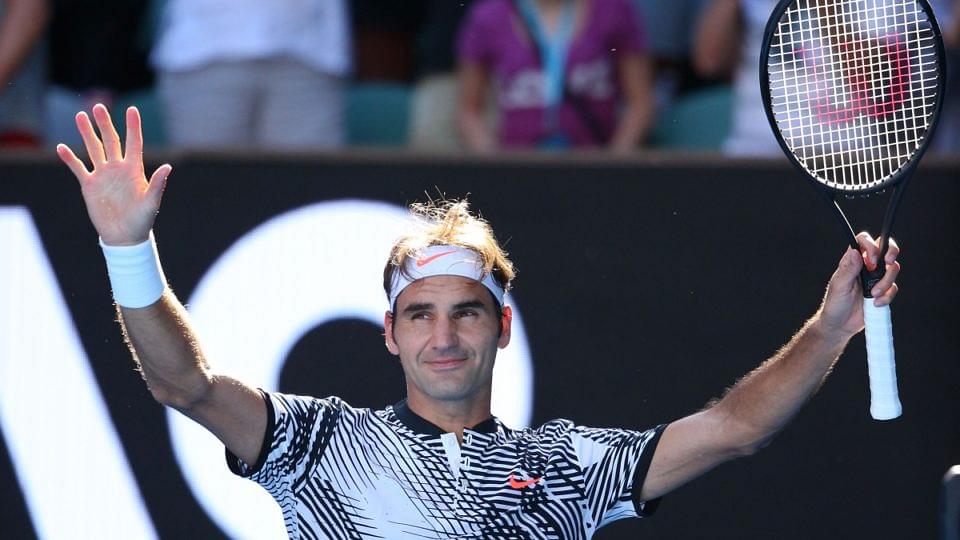Roger Federer, with his 18th Grand Slam title at the Australian Open has probably settled the ‘GOAT’ discussion for now. Moreover, winning the trophy after a drought of 4 and 1/2 years has made it even sweeter. However, he is not the only one to have done so. We take a look at 5 Tennis Players with largest duration between Grand Slam wins!

Roger Federer last tasted Grand Slam glory way back at the 2012 Wimbledon. He defeated Britain’s own and current world number 1, Andy Murray in the finals. However, the years following that would see a dip in Federer’s form and most recently, a career-threatening knee injury. However, all of that changed last Sunday!
1. Arthur Ashe (1970 Australian Open – 1975 Wimbledon : 5 yrs, 6 months)
The American tennis legend upon whom the Flushing Meadows stadium is named had a long career. Arthur Ashe was a winner of 3 Grand Slams, two of them coming 5 and a half apart from one another. He won the 1975 Wimbledon title after previously triumphing in the 1970 Australian Open, his second Grand Slam Title.
In 1970, he defeated Dick Crearly in straight sets to become the first non-Australian to clinch the title. For his next and final title, he would go on to defeat the defending champion, Jimmy Connors.
2. Virginia Wade (1972 Australian – 1977 Wimbledon : 5 years, 6 months)
Quite similar to Arthur Ashe, U.K’s Virginia Wade won 3 Grand Slam titles in her career. Interestingly, she had to wait for an agonizing 5 and a half years between her second and third Grand Slam titles. She triumphed at 1972 Australian Open and then in the 1977 Wimbledon Championships.

Wade’s 2nd Grand Slam title came after beating Evonne Goolagong in the final 6-4, 6-4. Thereafter, over 5 years later, she tasted success at her 16th attempt in Wimbledon. She won against defending champion Chris Evert in the semifinals before defeating Betty Stove in the finals. Coincidentally, this was also the 100th anniversary of Wimbledon.
3. Mary Pierce (1995 Australian Open – 2000 French Open : 5 years, 5 months)
Mary Pierce, a well known erstwhile doubles player in the ATP circuit also has 2 grand slam titles to her name. Surprisingly, much like the entries before, both of these spanned a whopping 5 years and 5 months from one another. Hence, she features in the list of ‘5 Tennis Players with largest duration between Grand Slam wins’
Also Read : Roger Federer has his eyes set on Wimbledon!
Pierce was in red-hot form in the 1995 Australian Open. The French-American ran through her opponents, losing just 30 games in the entire tournament. She decimated Sanchez-Vicario in straight sets in the finals. However, her next success would only come at the 2000 French Open, where she defeated Conchita Martinez in the finals.
4. Arantxa Sánchez (1989 French open – 1994 French open : 5 years)
Surprisingly, it is Arantxa Sanchez Vicario who has the same distinction as her rival of the mid 90s, Mary Pierce. Sanchez, from Barcelona, Spain is a 4 time Grand Slam winner. She also became the youngest winner of the French Open, winning it in 1989. She defeated world number 1 Steffi Graf in the finals.

Sanchez Vicario would have to wait for a long time to win a Grand Slam again after this historic feat. She triumphed in the 1994 edition of the French Open, when she beat Mary Pierce 6-4, 6-4. However, Mary would extract revenge at the next years’ Australian Open as mentioned earlier in this article.
5. Boris Becker (1991 Australian Open – 1996 Australian Open : 5 years)
German legend, Boris Becker was also one among the select few who dug down deep to win a title after a duration of 5 years or more. The final 2 title victories of the 6 time Grand Slam winner features in this list of ‘5 Tennis Players with largest duration between Grand Slam wins.’

In 1991, Boris Becker trumped Ivan Lendl in the finals of his very first outing at the Australian Open finals. He also achieved the world number 1 ranking following this victory. Though he had to wait for 5 years to beat Michael Chang in the finals to lift the 1996 Australian Open again, he had already achieved ‘legendary’ status by then.







